Verdict
The Xiaomi 15T has become a real price-performance hit in a very short time. The high RRP of almost 650 euros is forgotten at the current price level of around 400 euros, just a few weeks after the market launch. For an affordable mid-range smartphone, the Chinese manufacturer's new T model actually has everything it takes to become a bestseller.
The 6.83-inch 120 Hz OLED panel is not only super bright, but also offers a high pixel density and eye-friendly high-frequency PWM dimming. In combination with the overall appealing Dimensity 8400, users can also enjoy the Xiaomi 15T for a long time, thanks to its attractive battery life. The same applies to the Leica main camera, which produces very respectable photos in the mid-range.
Even though the 15T will probably only be updated to Android 19, the Xiaomi phone scores with a fairly long update period. If you also use a case for your smartphone, you may forgive the plastic casing for its lack of value. The Xiaomi 15T also lacks other premium smartphone features, such as wireless charging or a fast USB port.
Pros
Cons
Price and availability of the Xiaomi 15T
Although the Xiaomi 15T has a base RRP of 649.90 euros (approximately US$750), the price drop shortly after its launch is very pronounced. The mid-range smartphone is already available for around 400 euros from online retailers, including Amazon.de or directly from the manufacturer.
Table of Contents
- Verdict
- Specifications of the Xiaomi 15T
- Case - Waterproof Android-Phone
- Features - Only USB 2.0 for the mid-range phone
- Software - Xiaomi smartphone with Android 15
- Communication and GNSS - Calls not via satellite, but without mobile communications
- Phone functions and voice quality - Xiaomi smartphone supports two eSIMs
- Camera - Android-phone with Leica cameras
- Accessories and warranty - Xiaomi phone comes without power adapter
- Input devices and operation - Xiaomi 15T with Face Unlock
- Display - Large OLED screen with DC dimming
- Performance - Android-phone relies on Mediatek
- Games - Xiaomi 15T also interesting for gamers
- Emissions - Xiaomi smartphone with good cooling
- Battery life - Android phone without wireless charging
- Notebookcheck overall rating
- Possible alternatives in comparison
Just in time for the Christmas season, Xiaomi is once again launching its updated T series on the market, which traditionally aims to score with a strong price-performance ratio. The new Xiaomi 15T is no exception.
Equipped with new Leica cameras and a more powerful MediaTek SoC compared to the 14T, the mid-range phone is vying for the favor of price-conscious buyers. Those who highly value zoom photos can also check our Xiaomi 15T Pro review for more information.
Specifications of the Xiaomi 15T
Case - Waterproof Android-Phone
Xiaomi has adopted the design language of the previous models for the 15T. The gold color of our test sample is a new addition. The display has grown to 6.83 inches, and at 194 grams, the Xiaomi 15T is slightly lighter than the 14T model.
The mid-range smartphone is IP68-certified and offers a modern look with a high screen-to-body ratio of over 90 percent. Gorilla Glass 7i protects the OLED display against scratches.
The back is made of glass fiber-reinforced plastic, while the frame is also made of plastic and not aluminum like its predecessor. Despite minor compromises in the feel, the Xiaomi 15T impresses with its good workmanship.
Features - Only USB 2.0 for the mid-range phone
Xiaomi still relies on a USB 2.0 port for its T model without the option of image output. In our copy test, we achieved a transfer speed of just 30 MB/s with a Samsung Portable SSD T7. The connected storage media can be formatted with either NTFS or exFAT. However, USB-OTG is supported, allowing external devices to be connected without any problems.
Xiaomi uses LPDDR5X for the main memory. However, the internal storage uses a fast UFS 4.1 memory.
In terms of connectivity, the Xiaomi 15T already offers Bluetooth 6.0 for improved connectivity and energy efficiency compared to older Bluetooth versions. An IR blaster and NFC are also on board, enabling contactless payment and control of televisions or air conditioning systems. Miracast is available for wireless image transmission.
Ultra-wideband (UWB), a technology for precise positioning of smart tags, for example, is not included.
Software - Xiaomi smartphone with Android 15
The T series is advertised with four Android updates and six years of security updates. Since Xiaomi relies on Android 15 ex-works, Android 19 should be the end of the road. At around 400 euros, this is certainly not a deal-breaker, but Samsung or Google offers a little more future-proofing here.
The Xiaomi 15T was still running HyperOS 2.0 as the operating system during the test, but the global rollout of the major software update to HyperOS 3 has already begun. With an update during the test, the security patches are up to date as of October 2025.
Sustainability
The Xiaomi 15T is listed in the EPREL database with repair class C. This means that the availability of spare parts (in theory) is regulated for at least 6 years. Xiaomi does not provide information on the use of recycled materials for specific models, but only in very general terms, and CO2 emissions are not disclosed.
Communication and GNSS - Calls not via satellite, but without mobile communications
Unfortunately, the Xiaomi 15T does not come with modern WiFi 7, but only WiFi 6E. Nevertheless, the speed in the practical test is very high thanks to the use of the 6 GHz band. In combination with an Asus ROG Rapture GT-AXE11000, we achieved an average of over 1,600 MBit/s, which is slightly slower than the predecessor.
It also supports all current mobile communication standards, including 5G Sub6 and a wide range of LTE frequency bands. This means that the mid-range phone should be able to establish a data connection anywhere.
The Xiaomi 15T does not offer classic satellite communication, but the company's own Astral Communication can be used. This enables a direct connection between two Xiaomi devices without an active Wi-Fi or mobile phone connection. The manufacturer specifies a range of up to 1.3 kilometers for phone calls. However, this function is currently only available for the T series.
| Networking | |
| Xiaomi 15T | |
| iperf3 transmit AXE11000 | |
| iperf3 receive AXE11000 | |
| iperf3 transmit AXE11000 6GHz | |
| iperf3 receive AXE11000 6GHz | |
| Xiaomi Poco F7 Pro | |
| iperf3 transmit AXE11000 | |
| iperf3 receive AXE11000 | |
| Motorola Edge 60 Pro | |
| iperf3 transmit AXE11000 6GHz | |
| iperf3 receive AXE11000 6GHz | |
| Samsung Galaxy S25 FE | |
| iperf3 transmit AXE11000 | |
| iperf3 receive AXE11000 | |
| iperf3 transmit AXE11000 6GHz | |
| iperf3 receive AXE11000 6GHz | |
| Xiaomi 14T | |
| iperf3 transmit AXE11000 | |
| iperf3 receive AXE11000 | |
| iperf3 transmit AXE11000 6GHz | |
| iperf3 receive AXE11000 6GHz | |
| Average Wi-Fi 6E | |
| iperf3 transmit AXE11000 | |
| iperf3 receive AXE11000 | |
| iperf3 transmit AXE11000 6GHz | |
| iperf3 receive AXE11000 6GHz | |
| Average of class Smartphone | |
| iperf3 transmit AXE11000 | |
| iperf3 receive AXE11000 | |
| iperf3 transmit AXE11000 6GHz | |
| iperf3 receive AXE11000 6GHz | |
The Xiaomi phone quickly performs a Satfix outdoors with a high accuracy of 1 meter. In our practical test, we compare the Xiaomi 15T with a Garmin smartwatch (Venu 2). Both have some inaccuracies, but the mid-range phone's positioning is more than sufficient for navigation tasks.
Phone functions and voice quality - Xiaomi smartphone supports two eSIMs
For the price range in which the Xiaomi 15T operates, it offers very interesting options. In addition to 5G+5G dual SIM with two nanoSIM cards, users can also integrate two eSIMs into the system. A combination of both worlds is also possible.
The voice quality is natural and the noise suppression works satisfactorily. In addition to VoNR and VoLTE, VoWiFi is also supported.
Camera - Android-phone with Leica cameras
Although Xiaomi is positioning its T-series as a photo pro with its Leica camera, the hardware is not quite on par with the flagship competition, in many respects.
Compared to the camera elite, the main camera of the Xiaomi 15T uses a somewhat small 1/1.55-inch sensor, which is also used in the Mix Flip 2. Nevertheless, good photos in daylight are possible with the Light Fusion 800. The images show an appealing sharpness and high dynamic range. However, details are not brought out perfectly with the mid-range smartphone, and the contrast also drops slightly. In low light, the low yield and soft focus are not surprising due to the lack of a sensor.
With only 2x optical zoom, the telephoto camera is useful up to 5x magnification, but beyond that, it quickly becomes pixelated and artificial. We also feel that the exposure is not optimal. The same applies to the telephoto lens: it lacks OIS, as does the main camera, but at least it has autofocus.
The ultra-wide-angle lens has neither optical image stabilization nor autofocus. The imaging performance is decent, but it shows edge artifacts and blurring.
The mid-range smartphone records videos in Ultra HD with up to 60 FPS at best.
Image comparison
Choose a scene and navigate within the first image. One click changes the position on touchscreens. One click on the zoomed-in image opens the original in a new window. The first image shows the scaled photograph of the test device.
Main cameraMain cameraLow LightUltra wide-angleZoom 5xThe Xiaomi 15T reveals a very decent color reproduction under controlled lighting conditions. In our measurement, the colors are slightly brighter than the reference, but the DeltaE deviations are still significantly lower than those of the Flagship models (we tested the China version).


Accessories and warranty - Xiaomi phone comes without power adapter
The mid-range phone comes with a USB-C cable, a TPU case, and a SIM tool. A protective film is also pre-installed ex-works. The matching fast-charging power adapter or other accessories are optionally available in the manufacturer's online store.
The Warranty for the Xiaomi 15T is only 12 months in Germany and can be extended with the in-house Care insurance package against accidental damage and theft. Depending on the insurance scope, this costs between 74 and 104 euros at the time of testing.
Input devices and operation - Xiaomi 15T with Face Unlock
The Xiaomi 15T has a touchscreen from Tianma with a sampling rate of up to 2,560 Hz. However, this high refresh rate is only active in Game Turbo mode. The company's own wet-touch technology is also on board, enabling sensible operation with wet hands, and it worked well in the test.
An in-display sensor is available for biometric unlocking. The optical fingerprint recognition works reliably and quickly in the test, but not at the level of a Xiaomi 17. There is also an insecure 2D face recognition using the front camera.
The X-axis vibration motor of the Xiaomi 15T generates haptically appealing vibrations and conveys a feeling of value.
Display - Large OLED screen with DC dimming
Xiaomi uses an AMOLED panel with a 1,280p resolution and 12-bit color depth for its mid-range phone. With a diagonal of 6.83 inches, the pixel density is therefore a very good 447 ppi. The display can also automatically adjust the maximum frame rate of 120 Hz to 60 Hz or 90 Hz.
According to the data sheet, a peak brightness of 3,200 nits can be achieved. For our everyday usage scenario (APL18 sample), we are pleased to even exceed the manufacturer's specifications with 3,310 cd/m². With HDR content, we achieve a brightness of 3,267 cd/m². The Xiaomi 15T is therefore ideally suited for video content with a high dynamic range: HDR10, HDR 10+, Dolby Vision and HLG are available.
As is usual for smartphones with OLED screens, Xiaomi uses PWM to control the brightness. According to the manufacturer, the standard dimming method of the Xiaomi 15T for high brightness ranges is DC dimming, while high-frequency PWM dimming (3,840 Hz) is used for low brightness. We can also confirm the latter based on our measurement.
| |||||||||||||||||||||||||
Brightness Distribution: 94 %
Center on Battery: 1070 cd/m²
Contrast: ∞:1 (Black: 0 cd/m²)
ΔE ColorChecker Calman: 1.5 | ∀{0.5-29.43 Ø4.79}
ΔE Greyscale Calman: 2.5 | ∀{0.09-98 Ø5}
99.7% sRGB (Calman 2D)
Gamma: 2.24
CCT: 6648 K
| Xiaomi 15T AMOLED, 2772x1280, 6.8" | Xiaomi Poco F7 Pro AMOLED, 3200x1440, 6.7" | Motorola Edge 60 Pro P-OLED, 2712x1220, 6.7" | Samsung Galaxy S25 FE AMOLED, 2340x1080, 6.7" | Xiaomi 14T AMOLED, 2712x1220, 6.7" | |
|---|---|---|---|---|---|
| Screen | 47% | 20% | -26% | 25% | |
| Brightness middle (cd/m²) | 1070 | 1801 68% | 1099 3% | 1136 6% | 1012 -5% |
| Brightness (cd/m²) | 1079 | 1806 67% | 1073 -1% | 1132 5% | 1016 -6% |
| Brightness Distribution (%) | 94 | 94 0% | 91 -3% | 98 4% | 95 1% |
| Black Level * (cd/m²) | |||||
| Colorchecker dE 2000 * | 1.5 | 0.8 47% | 1.25 17% | 3.5 -133% | 0.7 53% |
| Colorchecker dE 2000 max. * | 3.9 | 1.8 54% | 1.68 57% | 5.5 -41% | 1.8 54% |
| Greyscale dE 2000 * | 2.5 | 1.3 48% | 1.4 44% | 2.4 4% | 1.2 52% |
| Gamma | 2.24 98% | 2.24 98% | 2.031 108% | 2.02 109% | 2.19 100% |
| CCT | 6648 98% | 6620 98% | 6403 102% | 6322 103% | 6489 100% |
* ... smaller is better
Screen Flickering / PWM (Pulse-Width Modulation)
| Screen flickering / PWM detected | 120 Hz Amplitude: 17.05 % Secondary Frequency: 4166 Hz | ||
The display backlight flickers at 120 Hz (worst case, e.g., utilizing PWM) . The frequency of 120 Hz is very low, so the flickering may cause eyestrain and headaches after extended use. In comparison: 53 % of all tested devices do not use PWM to dim the display. If PWM was detected, an average of 8152 (minimum: 5 - maximum: 343500) Hz was measured. | |||
Measurement series with fixed zoom level and different brightness settings (The amplitude curve at minimum brightness looks flat, but this is due to the scaling. The info box shows the enlarged version of the amplitude at minimum brightness)
With HyperOS in the second generation, the Xiaomi 15T has various color profiles, a white balance and an adjustment of individual parameters, such as gamma values, to choose from. With a look at our tests of the Xiaomi 17 and 17 Pro the setting options should be somewhat reduced after the update to HyperOS 3.
We examine the color calibration with the Calman analysis software and a photo spectrometer. In the "Pro" profile, we found the smallest deviations from the reference colors and a high color fidelity. However, the Predecessor was slightly better calibrated in our measurement.
Display Response Times
| ↔ Response Time Black to White | ||
|---|---|---|
| 1.28 ms ... rise ↗ and fall ↘ combined | ↗ 0.56 ms rise | |
| ↘ 0.7175 ms fall | ||
| The screen shows very fast response rates in our tests and should be very well suited for fast-paced gaming. In comparison, all tested devices range from 0.1 (minimum) to 240 (maximum) ms. » 6 % of all devices are better. This means that the measured response time is better than the average of all tested devices (20.3 ms). | ||
| ↔ Response Time 50% Grey to 80% Grey | ||
| 1.2 ms ... rise ↗ and fall ↘ combined | ↗ 0.5685 ms rise | |
| ↘ 0.631 ms fall | ||
| The screen shows very fast response rates in our tests and should be very well suited for fast-paced gaming. In comparison, all tested devices range from 0.165 (minimum) to 636 (maximum) ms. » 4 % of all devices are better. This means that the measured response time is better than the average of all tested devices (31.7 ms). | ||
Performance - Android-phone relies on Mediatek
When it comes to the SoC, Xiaomi does not reach for the highest performance shelf for its 15T model, the Dimensity 8400 is still a decent chipset for the mid-range. A Poco F7 Pro with the Snapdragon 8 Gen 3 is a good deal faster than the Xiaomi 15T with its Cortex-A725 cores, especially when it comes to single-core performance. However, the Xiaomi phone makes a convincing performance in AI calculations.
| UL Procyon AI Inference for Android - Overall Score NNAPI | |
| Motorola Edge 60 Pro | |
| Xiaomi 14T | |
| Xiaomi 15T | |
| Average MediaTek Dimensity 8400 (49010 - 49165, n=2) | |
| Average of class Smartphone (3769 - 81594, n=137, last 2 years) | |
| Xiaomi Poco F7 Pro | |
| Samsung Galaxy S25 FE | |
| AImark - Score v3.x | |
| Xiaomi 14T | |
| Xiaomi 15T | |
| Average MediaTek Dimensity 8400 (29244 - 37121, n=2) | |
| Average of class Smartphone (82 - 307528, n=126, last 2 years) | |
| Samsung Galaxy S25 FE | |
| Geekbench AI | |
| Single Precision NPU 1.5 | |
| Xiaomi 15T | |
| Average MediaTek Dimensity 8400 (n=1) | |
| Average of class Smartphone (80 - 5210, n=49, last 2 years) | |
| Samsung Galaxy S25 FE | |
| Half Precision NPU 1.5 | |
| Xiaomi 15T | |
| Average MediaTek Dimensity 8400 (n=1) | |
| Average of class Smartphone (80 - 36297, n=49, last 2 years) | |
| Samsung Galaxy S25 FE | |
| Quantized NPU 1.5 | |
| Xiaomi 15T | |
| Average MediaTek Dimensity 8400 (n=1) | |
| Average of class Smartphone (133 - 49889, n=49, last 2 years) | |
| Samsung Galaxy S25 FE | |
For graphics calculations, a Mali-G720 MP7 is installed. The Xiaomi phone is therefore very well positioned for the mid-range. The GPU is sufficiently fast, even for demanding games - the Xiaomi 15T achieved 25 fps in the 4K test of the GFXBench. A big leap in performance compared to the Predecessor in the tier tests.
GFXBench (DX / GLBenchmark) 2.7: T-Rex Onscreen | 1920x1080 T-Rex Offscreen
GFXBench 3.0: on screen Manhattan Onscreen OGL | 1920x1080 1080p Manhattan Offscreen
GFXBench 3.1: on screen Manhattan ES 3.1 Onscreen | 1920x1080 Manhattan ES 3.1 Offscreen
GFXBench: on screen Car Chase Onscreen | 1920x1080 Car Chase Offscreen | on screen Aztec Ruins High Tier Onscreen | 2560x1440 Aztec Ruins High Tier Offscreen | on screen Aztec Ruins Normal Tier Onscreen | 1920x1080 Aztec Ruins Normal Tier Offscreen | 3840x2160 4K Aztec Ruins High Tier Offscreen
| 3DMark / Wild Life Extreme Unlimited | |
| Xiaomi Poco F7 Pro | |
| Samsung Galaxy S25 FE | |
| Xiaomi 15T | |
| Xiaomi 14T | |
| Motorola Edge 60 Pro | |
| 3DMark / Wild Life Extreme | |
| Samsung Galaxy S25 FE | |
| Xiaomi Poco F7 Pro | |
| Xiaomi 15T | |
| Motorola Edge 60 Pro | |
| Xiaomi 14T | |
| 3DMark / Wild Life Unlimited Score | |
| Xiaomi Poco F7 Pro | |
| Samsung Galaxy S25 FE | |
| Xiaomi 15T | |
| Xiaomi 14T | |
| Motorola Edge 60 Pro | |
| 3DMark / Solar Bay Score | |
| Samsung Galaxy S25 FE | |
| Xiaomi Poco F7 Pro | |
| Xiaomi 15T | |
| Motorola Edge 60 Pro | |
| Xiaomi 14T | |
| 3DMark / Solar Bay Unlimited Score | |
| Samsung Galaxy S25 FE | |
| Xiaomi Poco F7 Pro | |
| Xiaomi 15T | |
| Xiaomi 14T | |
| Motorola Edge 60 Pro | |
| 3DMark / Steel Nomad Light Unlimited Score | |
| Samsung Galaxy S25 FE | |
| Xiaomi Poco F7 Pro | |
| Xiaomi 15T | |
| Motorola Edge 60 Pro | |
| Xiaomi 14T | |
| 3DMark / Steel Nomad Light Score | |
| Samsung Galaxy S25 FE | |
| Xiaomi Poco F7 Pro | |
| Xiaomi 15T | |
| Motorola Edge 60 Pro | |
| Xiaomi 14T | |
| GFXBench (DX / GLBenchmark) 2.7 / T-Rex Onscreen | |
| Xiaomi 14T | |
| Xiaomi Poco F7 Pro | |
| Samsung Galaxy S25 FE | |
| Motorola Edge 60 Pro | |
| Xiaomi 15T | |
| GFXBench (DX / GLBenchmark) 2.7 / T-Rex Offscreen | |
| Xiaomi 15T | |
| Motorola Edge 60 Pro | |
| Xiaomi 14T | |
| Xiaomi Poco F7 Pro | |
| Samsung Galaxy S25 FE | |
| GFXBench 3.0 / Manhattan Onscreen OGL | |
| Xiaomi 14T | |
| Xiaomi Poco F7 Pro | |
| Samsung Galaxy S25 FE | |
| Motorola Edge 60 Pro | |
| Xiaomi 15T | |
| GFXBench 3.0 / 1080p Manhattan Offscreen | |
| Xiaomi 15T | |
| Samsung Galaxy S25 FE | |
| Xiaomi Poco F7 Pro | |
| Motorola Edge 60 Pro | |
| Xiaomi 14T | |
| GFXBench 3.1 / Manhattan ES 3.1 Onscreen | |
| Xiaomi Poco F7 Pro | |
| Samsung Galaxy S25 FE | |
| Motorola Edge 60 Pro | |
| Xiaomi 14T | |
| Xiaomi 15T | |
| GFXBench 3.1 / Manhattan ES 3.1 Offscreen | |
| Samsung Galaxy S25 FE | |
| Xiaomi 15T | |
| Xiaomi Poco F7 Pro | |
| Motorola Edge 60 Pro | |
| Xiaomi 14T | |
| GFXBench / Car Chase Onscreen | |
| Samsung Galaxy S25 FE | |
| Xiaomi Poco F7 Pro | |
| Xiaomi 14T | |
| Motorola Edge 60 Pro | |
| Xiaomi 15T | |
| GFXBench / Car Chase Offscreen | |
| Samsung Galaxy S25 FE | |
| Xiaomi Poco F7 Pro | |
| Xiaomi 14T | |
| Xiaomi 15T | |
| Motorola Edge 60 Pro | |
| GFXBench / Aztec Ruins High Tier Onscreen | |
| Samsung Galaxy S25 FE | |
| Xiaomi Poco F7 Pro | |
| Xiaomi 14T | |
| Motorola Edge 60 Pro | |
| Xiaomi 15T | |
| GFXBench / Aztec Ruins High Tier Offscreen | |
| Samsung Galaxy S25 FE | |
| Xiaomi Poco F7 Pro | |
| Xiaomi 15T | |
| Xiaomi 14T | |
| Motorola Edge 60 Pro | |
| GFXBench / Aztec Ruins Normal Tier Onscreen | |
| Xiaomi Poco F7 Pro | |
| Samsung Galaxy S25 FE | |
| Motorola Edge 60 Pro | |
| Xiaomi 14T | |
| Xiaomi 15T | |
| GFXBench / Aztec Ruins Normal Tier Offscreen | |
| Xiaomi Poco F7 Pro | |
| Samsung Galaxy S25 FE | |
| Xiaomi 15T | |
| Motorola Edge 60 Pro | |
| Xiaomi 14T | |
| GFXBench / 4K Aztec Ruins High Tier Offscreen | |
| Samsung Galaxy S25 FE | |
| Xiaomi Poco F7 Pro | |
| Xiaomi 15T | |
| Xiaomi 14T | |
| Motorola Edge 60 Pro | |
The rather below-average performance in the browser benchmarks does not really match the impressive performance when surfing. We cannot say what the reason for the rather poor values is.
| Jetstream 2 - 2.2 Total Score | |
| Samsung Galaxy S25 FE (Chrome 141.0.7390.43) | |
| Xiaomi Poco F7 Pro (Chrome 135.0.7049.38) | |
| Average of class Smartphone (2 - 469, n=42, last 2 years) | |
| Xiaomi 15T (Chrome 141) | |
| Average MediaTek Dimensity 8400 (n=1) | |
| Motorola Edge 60 Pro (Chrome 137.0.7151.115) | |
| Speedometer 3 - Score 3.0 | |
| Samsung Galaxy S25 FE (Chrome 141.0.7390.43) | |
| Xiaomi Poco F7 Pro (Chrome 135.0.7049.38) | |
| Average of class Smartphone (1.03 - 42.8, n=123, last 2 years) | |
| Average MediaTek Dimensity 8400 (9.76 - 11.7, n=2) | |
| Xiaomi 15T | |
| Xiaomi 14T (Chrome 130.0.6723.73) | |
| WebXPRT 4 - Overall | |
| Samsung Galaxy S25 FE (Chrome 141.0.7390.43) | |
| Xiaomi Poco F7 Pro (Chrome 135.0.7049.38) | |
| Average of class Smartphone (27 - 306, n=147, last 2 years) | |
| Average MediaTek Dimensity 8400 (143 - 144, n=2) | |
| Xiaomi 15T (Chrome 141) | |
| Motorola Edge 60 Pro (Chrome 137.0.7151.115) | |
| Xiaomi 14T (Chrome 130.0.6723.73) | |
| Octane V2 - Total Score | |
| Samsung Galaxy S25 FE (Chrome 141.0.7390.43) | |
| Xiaomi Poco F7 Pro (Chrome 135.0.7049.38) | |
| Average of class Smartphone (2228 - 121337, n=200, last 2 years) | |
| Average MediaTek Dimensity 8400 (42452 - 47146, n=2) | |
| Xiaomi 15T (Chrome 141) | |
| Motorola Edge 60 Pro (Chrome 137.0.7151.115) | |
| Xiaomi 14T (Chrome 130.0.6723.73) | |
| Mozilla Kraken 1.1 - Total | |
| Xiaomi 14T (Chrome 130.0.6723.73) | |
| Average of class Smartphone (257 - 28190, n=155, last 2 years) | |
| Motorola Edge 60 Pro (Chrome 137.0.7151.115) | |
| Xiaomi 15T (Chrome 141) | |
| Average MediaTek Dimensity 8400 (883 - 977, n=2) | |
| Xiaomi Poco F7 Pro (Chrome 135.0.7049.38) | |
| Samsung Galaxy S25 FE (Chrome 141.0.7390.43) | |
* ... smaller is better
Although the UFS 4.1 memory of the Xiaomi 15T is theoretically very fast and offers high transfer rates, the mid-range phone's scores in the AndroBench are surprisingly slow. The memory controller of the Dimensity 8400 probably has a limiting effect.
| Xiaomi 15T | Xiaomi Poco F7 Pro | Motorola Edge 60 Pro | Samsung Galaxy S25 FE | Xiaomi 14T | Average 512 GB UFS 4.1 Flash | Average of class Smartphone | |
|---|---|---|---|---|---|---|---|
| AndroBench 3-5 | 174% | 203% | 70% | 164% | 149% | 73% | |
| Sequential Read 256KB (MB/s) | 1954.45 | 3930.33 101% | 3852.89 97% | 3756.44 92% | 3605.16 84% | 3809 ? 95% | 2222 ? 14% |
| Sequential Write 256KB (MB/s) | 1879.62 | 3469.2 85% | 3842.42 104% | 2450.19 30% | 3294.31 75% | 3258 ? 73% | 1838 ? -2% |
| Random Read 4KB (MB/s) | 278.9 | 356.12 28% | 439.58 58% | 382.44 37% | 403.97 45% | 380 ? 36% | 295 ? 6% |
| Random Write 4KB (MB/s) | 89.68 | 521.5 482% | 585.66 553% | 198.68 122% | 493.57 450% | 439 ? 390% | 336 ? 275% |
Games - Xiaomi 15T also interesting for gamers
The Xiaomi 15T is not a gaming smartphone, but its large, high-resolution screen and stereo sound still offer a really good gaming experience. The Mali-G720 MP7, which, unlike the Immortalis-G720, probably has to do without ray tracing, only managed 60 fps in our test. We determine the exact frame rates with the GameBench software.
Xiaomi itself lists several titles for the 15T model where 120 fps should be possible, including Call of Duty and Mobile Legends. The stable display for Genshin Impact confirms that the Xiaomi phone has sufficient GPU power for current games.
Emissions - Xiaomi smartphone with good cooling
Temperature
The temperature development is not a major problem for the Xiaomi 15T, even under permanent load. The performance during the 3DMark stress tests remains constant and only results in moderate throttling. We achieve SoC throttling of up to 25 percent.
(±) The maximum temperature on the upper side is 42.8 °C / 109 F, compared to the average of 35.2 °C / 95 F, ranging from 21.9 to 247 °C for the class Smartphone.
(±) The bottom heats up to a maximum of 43.5 °C / 110 F, compared to the average of 34 °C / 93 F
(+) In idle usage, the average temperature for the upper side is 25.1 °C / 77 F, compared to the device average of 32.9 °C / 91 F.
3DMark Stress Tests
| 3DMark | |
| Wild Life Stress Test Stability | |
| Xiaomi 15T | |
| Xiaomi 14T | |
| Xiaomi Poco F7 Pro | |
| Samsung Galaxy S25 FE | |
| Motorola Edge 60 Pro | |
| Wild Life Extreme Stress Test | |
| Xiaomi 15T | |
| Xiaomi Poco F7 Pro | |
| Xiaomi 14T | |
| Samsung Galaxy S25 FE | |
| Motorola Edge 60 Pro | |
| Solar Bay Stress Test Stability | |
| Xiaomi 15T | |
| Xiaomi Poco F7 Pro | |
| Xiaomi 14T | |
| Samsung Galaxy S25 FE | |
| Motorola Edge 60 Pro | |
| Steel Nomad Light Stress Test Stability | |
| Xiaomi 15T | |
| Xiaomi Poco F7 Pro | |
| Xiaomi 14T | |
| Samsung Galaxy S25 FE | |
| Motorola Edge 60 Pro | |
Speaker
The stereo speakers with Dolby Audio support sound good, but have very little depth. The Pink Noise also shows only a linear progression in the treble. Headphones or external speakers can be connected via the USB-C port. If you prefer to use Bluetooth for wireless output, there are many audio codecs and the new 6.0 standard, including Auracast.
Xiaomi 15T audio analysis
(+) | speakers can play relatively loud (92.2 dB)
Bass 100 - 315 Hz
(-) | nearly no bass - on average 25.2% lower than median
(+) | bass is linear (5.8% delta to prev. frequency)
Mids 400 - 2000 Hz
(±) | reduced mids - on average 6.1% lower than median
(+) | mids are linear (4.5% delta to prev. frequency)
Highs 2 - 16 kHz
(+) | balanced highs - only 2.3% away from median
(+) | highs are linear (2.8% delta to prev. frequency)
Overall 100 - 16.000 Hz
(±) | linearity of overall sound is average (15.9% difference to median)
Compared to same class
» 4% of all tested devices in this class were better, 4% similar, 92% worse
» The best had a delta of 11%, average was 35%, worst was 134%
Compared to all devices tested
» 24% of all tested devices were better, 5% similar, 71% worse
» The best had a delta of 4%, average was 24%, worst was 134%
Xiaomi 14T audio analysis
(+) | speakers can play relatively loud (91.4 dB)
Bass 100 - 315 Hz
(-) | nearly no bass - on average 26% lower than median
(+) | bass is linear (5.6% delta to prev. frequency)
Mids 400 - 2000 Hz
(±) | reduced mids - on average 7.2% lower than median
(+) | mids are linear (6.1% delta to prev. frequency)
Highs 2 - 16 kHz
(+) | balanced highs - only 4.2% away from median
(+) | highs are linear (2.6% delta to prev. frequency)
Overall 100 - 16.000 Hz
(±) | linearity of overall sound is average (18.2% difference to median)
Compared to same class
» 17% of all tested devices in this class were better, 8% similar, 75% worse
» The best had a delta of 11%, average was 35%, worst was 134%
Compared to all devices tested
» 38% of all tested devices were better, 8% similar, 54% worse
» The best had a delta of 4%, average was 24%, worst was 134%
Battery life - Android phone without wireless charging
Power consumption
The lithium-polymer battery in the Xiaomi 15T has a capacity of 5,500 mAh and supports the company's own fast charging technology with up to 67 watts. However, the charging process took just under 60 minutes in the test. Wireless charging is not supported.
The power consumption of the mid-range phone is efficient.
| Off / Standby | |
| Idle | |
| Load |
|
Key:
min: | |
| Xiaomi 15T 5500 mAh | Xiaomi Poco F7 Pro 6000 mAh | Motorola Edge 60 Pro 6000 mAh | Samsung Galaxy S25 FE 4900 mAh | Xiaomi 14T 5000 mAh | Average MediaTek Dimensity 8400 | Average of class Smartphone | |
|---|---|---|---|---|---|---|---|
| Power Consumption | -7% | -48% | -8% | 9% | -4% | -7% | |
| Idle Minimum * (Watt) | 0.8 | 0.89 -11% | 1.3 -63% | 0.87 -9% | 0.97 -21% | 0.935 ? -17% | 0.847 ? -6% |
| Idle Average * (Watt) | 1.2 | 1.13 6% | 1.9 -58% | 1.48 -23% | 1.12 7% | 1.245 ? -4% | 1.431 ? -19% |
| Idle Maximum * (Watt) | 1.26 | 1.18 6% | 2.4 -90% | 1.52 -21% | 1.19 6% | 1.31 ? -4% | 1.61 ? -28% |
| Load Average * (Watt) | 6.8 | 8.59 -26% | 8.6 -26% | 6.76 1% | 4.13 39% | 6.47 ? 5% | 7.09 ? -4% |
| Load Maximum * (Watt) | 14.32 | 15.81 -10% | 14.9 -4% | 12.89 10% | 12.25 14% | 14.1 ? 2% | 11.2 ? 22% |
* ... smaller is better
Power consumption: Geekbench (150 cd/m²)
Power consumption: GFXbench (150 cd/m²)
Battery life
The battery runtimes of the Xiaomi 15T are at a good level. The best comparison can be made by setting the display brightness to 150 cd/m². The Xiaomi phone achieves over 17 hours in our WLAN test and thus lasts just as long as its predecessor. On the Pro model, however, the 15T loses almost 4 hours.
| Xiaomi 15T 5500 mAh | Xiaomi Poco F7 Pro 6000 mAh | Motorola Edge 60 Pro 6000 mAh | Samsung Galaxy S25 FE 4900 mAh | Xiaomi 14T 5000 mAh | |
|---|---|---|---|---|---|
| Battery runtime | 27% | 30% | -22% | -7% | |
| WiFi v1.3 (h) | 17.2 | 21.8 27% | 22.4 30% | 15.1 -12% | 18.2 6% |
| Load (h) | 4.5 | 3.1 -31% | 3.6 -20% | ||
| Reader / Idle (h) | 40.6 | 33.6 | |||
| H.264 (h) | 25.1 | 21.9 |
Notebookcheck overall rating

The significant price drop of the Xiaomi 15T makes the mid-range phone a very interesting choice in the price range around 400 euros, with a very good overall package.
Xiaomi 15T
- 11/17/2025 v8
Marcus Herbrich
Possible alternatives in comparison
Image | Model / Review | Price | Weight | Drive | Display |
|---|---|---|---|---|---|
| Xiaomi 15T MediaTek Dimensity 8400 ⎘ ARM Mali-G720 MP7 ⎘ 12 GB Memory, 512 GB | Amazon: 1. $6.64 Anoowkoa 3 Pack Designed for... 2. $7.99 Suttkue for Xiaomi 15T Pro S... 3. $7.59 Natbok 2+2 Pack for Xiaomi 1... List Price: 650€ | 194 g | 512 GB UFS 4.1 Flash | 6.83" 2772x1280 447 PPI AMOLED | |
| Xiaomi Poco F7 Pro Qualcomm Snapdragon 8 Gen 3 ⎘ Qualcomm Adreno 750 ⎘ 12 GB Memory, 512 GB | Amazon: 1. $579.99 XIAOMI Poco F7 PRO 5G + 4G L... 2. $345.00 Xiaomi Poco X7 PRO 5G + 4G L... 3. $11.99 Ibywind For Xiaomi Poco F7 P... List Price: 650 Euro | 206 g | 512 GB UFS 4.1 Flash | 6.67" 3200x1440 526 PPI AMOLED | |
| Motorola Edge 60 Pro MediaTek Dimensity 8350 ⎘ ARM Mali-G615 MP6 ⎘ 12 GB Memory, 512 GB | Amazon: 1. $11.99 Ibywind For Motorola Edge 60... 2. $6.98 Natbok 2 Pack 3D Compatible ... 3. $8.88 LXEEOLX [2 Pack Hydrogel Scr... List Price: 600 Euro | 186 g | 512 GB UFS 4.0 Flash | 6.67" 2712x1220 446 PPI P-OLED | |
| Samsung Galaxy S25 FE Samsung Exynos 2400 ⎘ Samsung Xclipse 940 ⎘ 8 GB Memory, 256 GB | Amazon: 1. $8.99 3 Pack Glass Screen Protecto... 2. $3.99 Wiaocit 3 Pack Tempered Glas... 3. $579.99 Samsung Galaxy S25 FE 5G (Fa... List Price: 809€ | 190 g | 256 GB UFS 4.0 Flash | 6.70" 2340x1080 382 PPI AMOLED | |
| Xiaomi 14T MediaTek Dimensity 8300-Ultra ⎘ ARM Mali-G615 MP6 ⎘ 12 GB Memory, 512 GB | Amazon: 1. $11.99 Ibywind Screen Protector For... 2. $4.99 Mr.Shield Screen Protector c... 3. $5.59 Anoowkoa 3 Pack Compatible w... | 195 g | 512 GB UFS 4.0 Flash | 6.67" 2712x1220 446 PPI AMOLED |
Transparency
The selection of devices to be reviewed is made by our editorial team. The test sample was provided to the author as a loan by the manufacturer or retailer for the purpose of this review. The lender had no influence on this review, nor did the manufacturer receive a copy of this review before publication. There was no obligation to publish this review. As an independent media company, Notebookcheck is not subjected to the authority of manufacturers, retailers or publishers.
This is how Notebookcheck is testing
Every year, Notebookcheck independently reviews hundreds of laptops and smartphones using standardized procedures to ensure that all results are comparable. We have continuously developed our test methods for around 20 years and set industry standards in the process. In our test labs, high-quality measuring equipment is utilized by experienced technicians and editors. These tests involve a multi-stage validation process. Our complex rating system is based on hundreds of well-founded measurements and benchmarks, which maintains objectivity. Further information on our test methods can be found here.







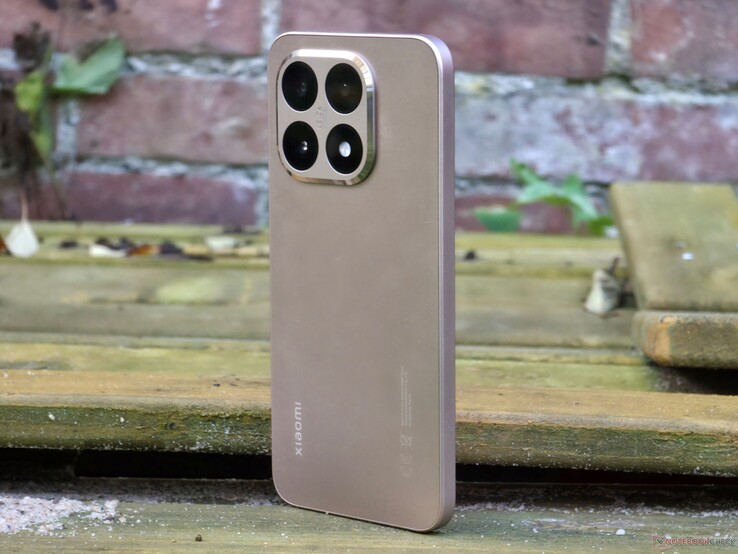








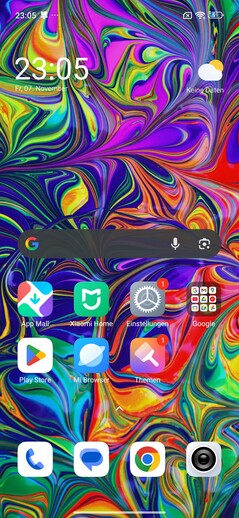

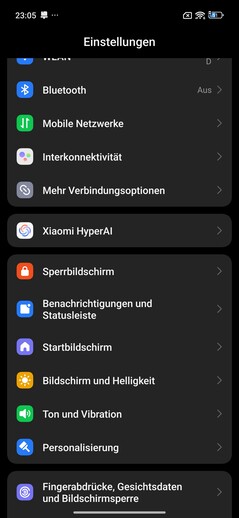
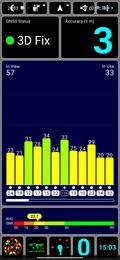
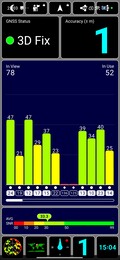

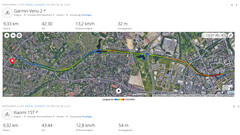










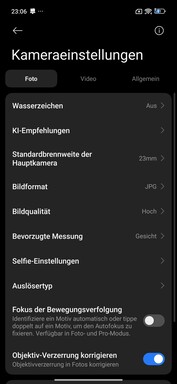




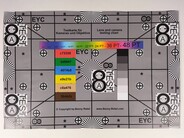







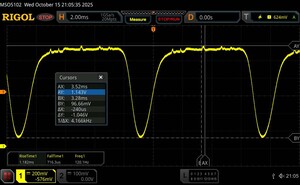






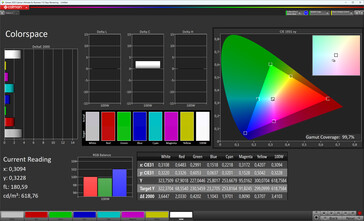
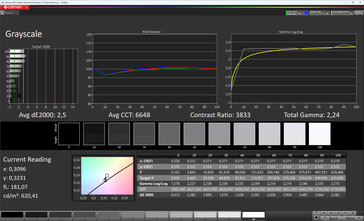
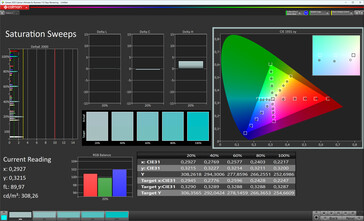

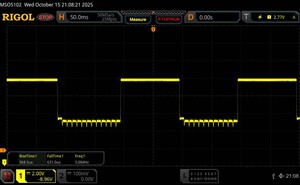
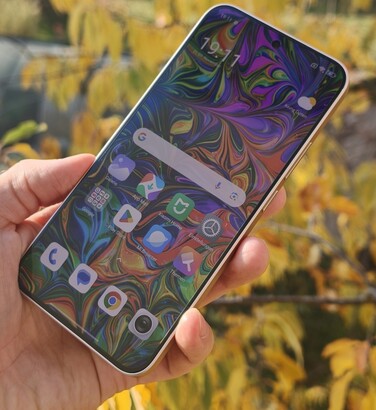
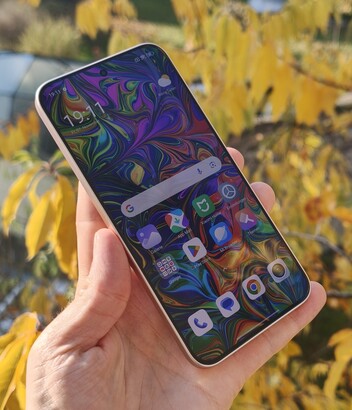




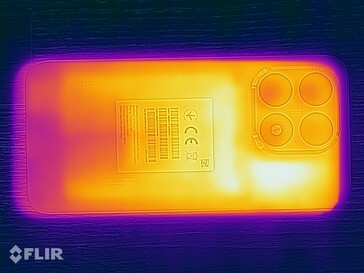
 Total Sustainability Score:
Total Sustainability Score: 













